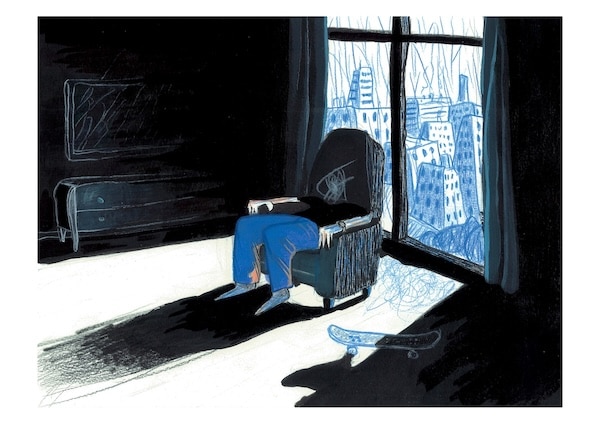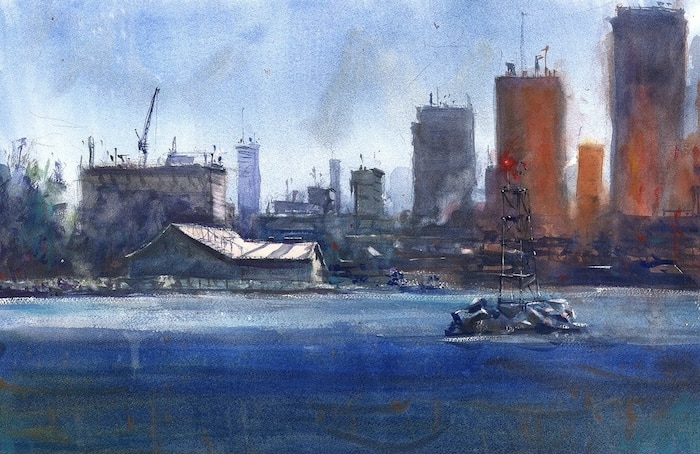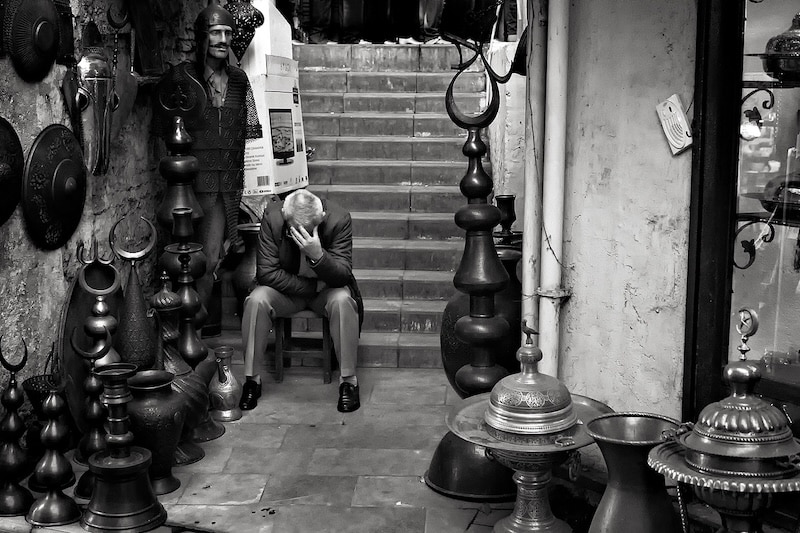Imagine you are an aspiring fine art photographer trying to make a name for yourself in the art world. A friend suggests submitting your latest series to a renowned art competition, which could bring significant exposure to potential buyers and collectors. The submission process requires a detailed description of each work, and you really want to impress the judges since winning this competition would be a huge boost to your career.
How do you craft a narrative that effectively communicates your art’s concept, intentions, influences, or inspirations? The answer lies in choosing the right art words to bring your work to life and get the viewers excited about it.
How you describe your art can mean the difference between clinching a sale, earning gallery representation, or being chosen for a new commission or project. Using precise and appropriate art words will highlight the key features of your artwork, encompassing visual elements such as color, form, texture, line, shape, and space, as well as the techniques and mediums utilized, its artistic style or movement, and the emotions or conceptual message you want to express.
However, describing your work’s aesthetic qualities and symbolic meaning may not come naturally. The guidelines below can help you find the right art words that connect with your audience, turning them into fans, followers, and buyers.
From Technique To Style: Blend Art Words To Build a Narrative
Before diving into writing your descriptions, you should first reconnect with your initial creative intent for the piece. Think about why you created it. Were you capturing a moment or creating a narrative? Was there a distinct meaning you wanted to convey? What core ideas or emotions motivated the work? Why did you make certain visual decisions, such as form, color, or texture?
After considering these initial creative aspects, your next step is to identify art words that best capture the essence of your work. While there are numerous approaches to this, building a set of terms based on commonly used categories is among the most effective. Let’s look at some of these categories and craft example terms to illustrate how they can convey an artwork’s unique meaning and story.
Visual Elements
When it comes to compiling a list of art words to describe your artwork, a logical starting point is the visual elements. These tangible aspects immediately catch the eye, such as the subject matter, the colors, or the texture. Starting with these elements is a practical approach since they are the easiest to articulate. This isn’t to say they’re more important than other aspects, but they are often what viewers notice first and can relate to quickly.
You might want to think about these visual elements:
- Colors: Highlight specific shades, hues, and tones that are signature to your work. (Deep emerald, stark white, vibrant hues.)
- Textures: Describe textures found in your work, whether rough or sleek. (Chaotic brushwork, polished finishes)
- Composition: Discuss your compositional choices, such as layout or figure placement. (Symmetrical arrangements, central figures).
- Design Principles: Mention design elements key to your style, such as line, shape, pattern, or form.
- Media and Surfaces: Share the types of media and surfaces you use. (Neon on aluminum, mixed media.)

Nico Pearleyes, “The Anguish of Living” (2020)
To illustrate this concept, let’s examine ‘The Anguish of Living’ (2020) by Nico Pearleyes, which depicts a scene rich in emotion and artistic technique. The following are some of the art words that describe the visual elements of this work:
- Colors: Muted blues, grays, and whites.
- Textures: Smooth, with subtle variations.
- Composition: Centralized, introspective figure.
- Design Principles: Balanced use of straight and curved lines.
- Media and Surfaces: Pencil on paper.
Choosing art words that clearly highlight the visual elements of your work will help set your tone and perspective for the viewer.
Artistic Style and Influences
Once you’ve nailed down the visual elements, it’s time to explain the work’s artistic style and influences, giving your audience a glimpse into the ‘why’ and ‘how’ of your piece. Listing your inspirations and influences, especially if they fall into well-known genres, will give the viewer an instant contextual framework from which to view your work.
- Art Genres or Movements: Identify specific art movements or genres that your work aligns with. (Cubism, Impressionism, Minimalism).
- Creative Approaches: Discuss whether your work is characterized by specific artistic methods or conceptual frameworks (Representational, Abstract, Figurative).
- Inspirational Sources: Mention artists, periods, or cultures that have influenced your style and techniques.
For example, you might describe a series of paintings as Monet-inspired, drawing on the techniques and themes of Impressionism or the specifics of Monet’s style, such as his use of light and brushwork.

Frank Koran’s painting of Randall Island could be described as “Impressionism” in his list of art words that describe the work.
Meaning and Intention
Moving beyond the visual and stylistic elements, you should also consider finding art words that convey your work’s conceptual themes and emotional intentions. This language specifically helps reveal the unique motivations and personal experiences that shape your art, allowing viewers to understand what you create and why you create it.
- Artistic Motivation: Share what drives your creativity to give insight into your creative mind. (Express profound emotional experiences, invite contemplation.)
- Symbolic Interpretation: Explain the deeper meanings and symbols in your work. (Serpents as betrayal, ravens as omens, roses for love.)
- Engaging Questions: Pose questions inviting viewers to interact with your art personally. Ask provocative or introspective questions to make the viewing experience more immersive and thought-provoking.
Thoughtfully chosen terms that reveal your artistic inspirations and meanings enable viewers to move beyond their initial impressions of the work, encouraging them to see more than what is on the surface. It can also give them insight into the meaning behind your other works and who you are as an artist.
Bringing It All Together: Crafting a Compelling Artistic Narrative
Now that you’ve gathered a range of descriptors for your artwork covering everything from visuals to concepts, it’s important not to simply dump all these terms into your description. Here’s a more effective approach:
- Revise and Refine: Go through your list and pick out the terms that really hit the mark. Look for words that not only describe but also enlighten.
- Organize Your Language: Think about how each word serves your description. Which ones highlight your style? Which ones bring out the symbolic meanings?
- Plan Your Narrative: Decide on the order of your words. Think about where you want to start, what context you want to provide, and how you want the reader to feel. Aim for a flow that feels natural, not jumbled.
- Create Engaging Mini-Stories: Use small groups of 4-6 descriptive elements to craft vivid, concise snapshots. These should be like literary brushstrokes, painting a picture in the reader’s mind.
- Smooth Transitions: Make sure your mini-stories connect well, creating a unified and dynamic narrative, much like an artist ensures a viewer’s eye moves smoothly across a canvas.
By moving from a broad collection of words to a carefully chosen and ordered set, you’re not just listing impressions – you’re defining how you want the viewer to see your work using the verbal palette you’ve developed.
Let’s illustrate how choosing the right art words can help create an effective description using the following work as an example.

Steve Schlackman, “Things Have to Get Better” (2018)
This is a photo I captured while visiting the Grand Bazaar in Istanbul, Turkey. I created a list of art words and refined them, as shown below.
Art Words Identified:
-
- Colors: Monochrome palette.
- Textures: tactile surfaces, metal objects.
- Composition: Centralized figure. Grand Bazaar is one of the world’s oldest covered markets.
- Design Principles: Balanced use of straight and curved lines and dramatic contrasts.
- Media and Surfaces: Black and white photography, digital.
- Art Genres or Movements: Street photography, Documentary style.
- Creative Approaches: Representational, capturing real-life scenes.
- Inspirational Sources: Influences of classic street photographers like Henri Cartier-Bresson.
- Artistic Motivation: Capturing the essence of everyday life, highlighting the beauty in mundane moments.
- Symbolic Interpretation: The solitary figure, head bowed, the angst of an empty shop.
- Engaging Questions: What happens if my store doesn’t get busier?
Crafted Description from Identified Art Words:
“Things Have to Get Better” is a striking example of street photography, capturing the everyday life of Istanbul’s urban dynamics. The monochrome palette highlights the long history of Grand Bazaar, where this shop resides. This work echoes street photography traditions, akin to Henri Cartier-Bresson’s candid photos. Like Bresson, this representational style focuses on real-life scenes, driven by an artistic motivation to uncover the underlying emotions and motivations of those who inhabit these public spaces.
Symbolically, the lone figure with his head bowed amidst the shop, full of his wares but without patrons to buy them, serves as a reminder that across the globe, people have the same fears and angst. How will I feed my family if business doesn’t get better? The piece invites reflective questions about these moments so common everywhere.
This striking work combines technical skill with introspective depth, offering a unique perspective on Istanbul’s everyday life and prompting viewers to ponder their own situations.
Articulating Your Artistic Vision
The art of describing your work is as crucial as the art itself. By carefully selecting and strategically using art words, you describe and enliven your work, inviting the viewer into a more profound, personal engagement with it.
As you continue to create, let your descriptions evolve alongside your art. Keep exploring new ways to express your vision, and don’t shy away from experimenting with language just as you do with artistic mediums. Your art words are an extension of your creative expression, a vital part of the story you’re telling through your art.
In the end, how you articulate your work can open doors to new opportunities, spark conversations, and build connections with your audience.
What art words have you found most effective in capturing the essence of your work, and how have they influenced the way viewers interact with your art? Share your experiences and insights in the comments below!
